We’ave wall mural. Photo by Merri Schwartz, courtesy of Dan Snaith.
Article originally published December 20, 2013 by The Grid online (thegridto.com).
In the late 1990s, this quirky three-storey Dundas West venue provided a homebase for emergent female DJs and was a hotbed for techno, drum ‘n’ bass and all kinds of experimentation. It also helped launch the careers of Caribou, Peaches, and future Azari & III member Christian Newhook.
BY: DENISE BENSON
Club: We’ave, 330 Dundas St. W.
Years in operation: 1997–2000
History: There is a row of heritage properties along Dundas West, between McCaul and Beverley Streets and directly opposite the Art Gallery of Ontario, that tend to catch the eye. Built in the late 19th century as homes, the properties at 312–356 Dundas West gained heritage status in 1973, and now host a mix of galleries, cafés, and other businesses.
The building at number 330 stands out for its shape, colour, and newness. An infill property that sits snugly between number 326 (the Howard Bryant House) and 334 (the Richard Chadd House), 330 is the relatively modern two-and-a-half-storey commercial building that replaced one of the original detached houses. It’s a quirky build, but not entirely out of place with OCAD University right around the corner.
The address opened as We’ave, an arts and music complex, in March of 1997. Its original general manager, Sherri Ranger, had envisioned the venue as an artists’ co-op.
“We’ave stood for ‘We Have,’ which was Sherri’s concept,” explains musician and DJ Barbi Castelvi, hired in April ’97 as its live-music booker and publicist.
“They were having some parties, but there was no liquor licence or restaurant yet,” Castelvi explains in an email interview. “It was literally a drop-in artist co-op. [Experimental jazz ensemble] GUH already had a residency; they were Sherri’s friends. There were also artist workshops, curated by Sherri.”
By mid-April, Ranger departed as she believed the project was becoming too commercialized (she spoke of this in an April 1997 interview with EYE Weekly). Castelvi does agree that the idea of an artist co-op did not hold great appeal for We’ave’s main investor, Eddy Chin, or filmmaker Cindy Archer, also deeply involved in developing the space.
“Cindy worked hard at opening the restaurant and did all the hiring,” says Castelvi. “The restaurant did open, and the food was good. They were trying to appeal to the AGO-goers across the street.”
Music and art, however, became We’ave mainstays.
In addition to performances by GUH (who were often joined by guests like Wooden Stars and Julie Doiron), musical acts including Saracen, Ember Swift, Bent, Tuuli, and Guitar Army were programmed by Castelvi. She also performed as vocalist of new-wave band The Spy, and booked in rock DJs like Starboy (a member of Robin Black’s Intergalactic Rock Stars band). An early Blowup event featured founding DJ Davy Love alongside bands Poppyseed and the Love Explosion Orchestra and Man Rays.
Still, Castelvi says that We’ave “wasn’t quite the venue” for the indie, punk, and glam bands she favoured. She left by late June, and would go on to perform in numerous bands, assist Dan Burke in bookings at both Club Shanghai and, later, the El Mocambo, and DJ at venues as varied as Bovine Sex Club, 56 Kensington, Mod Club, and CiRCA.
“I remember going to a meeting at We’ave where a very young, wide-eyed Leslie Feist was hired as a waitress,” Castelvi concludes. “I believe she did some booking after I left.”
By mid-July, We’ave officially re-launched. It would be another half year before the venue’s future became clear.
Why it was important: Centrally located, simply decorated, and with three different levels (allowing it to feel busy with 100 people, but hold hundreds more), We’ave was a versatile, intimate space. Its low-ceilinged, dimly lit basement especially became an epicentre of creativity as some of this city’s most influential DJs and party producers of the late-’90s-to-early-2000s learned to stretch their imaginations there.
People entered We’ave through this basement. The walls were largely painted blue. One featured a colourful mural. A long, narrow hallway led to the main room, with a small bar on the right, DJ area on the left, and sizable rectangular dancefloor in the middle. There were small booths for seating, both by the room’s front window and along two walls near the dancefloor. DJs played while tucked under the stairwell that led to the second floor, which had a similar layout, but was not always open. Both floors had small, raised stages, and featured artwork that changed frequently.
“We’ave was quaint and cool at the same time,” says Amanda Lachapelle a.k.a. DJ/producer Freedom, one of the founders of Chicks Dig It, a Monday event that boasted a roster of female talent.
Chicks Dig It, which would come to epitomize the We’ave’s community vibe and wide-open music policy, grew out of a weekly that Lauren Speers, a.k.a. DJ Chocolate, had started with fellow bass-loving DJs Jarkko and Sugar Daddy Moth in late 1997. At the time, there were no other DJ residencies at We’ave.
“I played a party there, and the managers—Jack and Diana [Editor’s note: no surnames for either are known]—and I hit it off,” explains Speers. “They offered me Mondays because they had no one coming in during the week.”
Speers developed the idea of Chicks Dig It, and launched it in February 1998 with DJs Freedom and Liz. All three women had a deep love of drum ‘n’ bass, with Lachapelle leaning toward Moving Shadow-style breakbeats while Speers mixed ragga jungle with reggae, dub, and hip-hop. D.R.S. and Kenny Ken’s “Everyman,” DJ Rap’s “Intelligent Woman,” and “Wings of the Morning,” by Capleton and Method Man were among her playlist staples.
As the crowds attending We’ave’s friendly and free Mondays started to swell, so too did the Chicks Dig It roster.
“We began with a small group, and as time went on more female DJs started their careers, and joined in,” recalls Lachapelle. “It was a great community.”
Soon, Purnnita Kotecha a.k.a. Lady P, linked with the crew. Following her were DJs like Dalia and Venus (hip-hop heads and co-hosts of CHRY’s Best Kept Secret) and electronic-music lovers like Zuzana Grimm, LeeLee Mishi, Onastic, Siren, and Violet. Still more DJs joined over time, including Abi Roach a.k.a. Zeal, Wasabi, Panda, Switch, Amtrak, and myself. When We’ave’s second floor was renovated and Chicks Dig It Large was launched to cover both spaces, more house, hip-hop, drum ‘n’ bass and techno was added as Ray Prasad, Jocelyn D, Kalmplex, KLC, and other women rotated through.
“It was a place to play without being judged, and a place for many to get better as well,” says Lachapelle. “I loved having so much support, and a space to let loose and practice, and to play new tracks of our own. It was a great open forum, and people in the scene respected that. I am pretty sure we inspired a few girls out there!”
Chicks Dig It was given a further boost when Freedom and Chocolate were featured in a special about Toronto drum ‘n’ bass that aired on The NewMusic in 1998. (Their segment begins at 6:50 in the video below.)
1998 segment on The NewMusic devoted to Toronto drum ‘n’ bass, including footage from Chicks Dig It (at 6:50).
While Chicks Dig It anchored Mondays at We’ave, a DJ crew devoted to deep house and techno held down Fridays. Tyler Kerr, Mike Welker a.k.a. Blotto, Michael Markus, Bryan Hamilton a.k.a. Bryan Falling, and Ray Gillespie a.k.a. Lazy Ray were the men behind Mettle.
They had done a few parties at nearby venue The Lemon Drop in the summer of ‘97, but it wasn’t the right fit.
“When we first saw the basement at We’ave, we all fell in love,” gushes Gillespie. “That dark little room with a great dancefloor was perfect for our music.”
Mettle kicked off at We’ave in January of 1998, promoted with the help of Hamilton’s sophisticated flyer-design work and a network of friends, including Zuzana Grimm, who also worked the door.
Between the five residents, a wide spectrum of deep, funky house, and techno was covered. They played everything from French to Chicago house, the dub-techno released on German labels Basic Channel and Chain Reaction, and the hypnotic tech-house of Sweden’s Svek imprint.
Detroit producers were the biggest shared influence among Mettle DJs however, especially Kenny Dixon Jr. a.k.a. Moodyman.
“I’d say that his style touched on everything we did,” says Gillespie. “Moodyman was our guy for sure, and the other guys in that school—Rick Wilhite, Rick Wade. Theo Parrish—we loved them.” (He points to Paperclip People’s “Throw,” “Your Love” by Rick Wade, “January” by Kenny Dixon Jr., Rick Wilhite’s Godson EP, and “I Can’t Kick This Feeling When It Hits” by Moodyman as examples.)
But it wasn’t just Mettle’s selections that filled We’ave’s basement with hundreds of “nerdy techno guys, ravers, indie kids, and b-boys,” as Gillespie puts it; it was also the sound system through which they were heard.
We’ave’s own system was good (though DJs did have to cart in their own turntables and mixer for well over a year), but with the added speakers Mettle bought by not paying themselves, sound fully enveloped partygoers.
“We knew if we split our $5 cover five ways, we wouldn’t be walking away with much cash, so we decided we’d save all the money to re-invest,” Gillespie explains. “Very quickly, we were able to buy a pair of the big Cerwin Vega bass bins. They still have the deepest, most visceral bass I’ve heard.
“We wheeled them out Friday night to add to We’ave’s sound, which was already decent. The combo of playing well-produced 12-inches in that basement with those bins was magical. The room sounded amazing. The only lighting we had was a disco ball—just really dark, with those spinning dots.”
“It was hot and tight,” describes Hamilton, “The music pounded the crowd, and everyone got down. I did the most serious dancing of my life in that little box.”
Adds Kerr, “This combination of having superior sound, both on the dancefloor and in the DJ booth, coupled with the deep vibe we conveyed, made a lot of DJs who would normally play in big venues—where they’d have to cater to a clubby crowd—ask to play their deeper records at Mettle for an appreciative crowd.”
Local favourites like Algorithm, Adam Marshall, Brennan Green, Eric Downer, Nick Holder, and Kenny Glasgow were among Mettle’s guests. When the second floor of We’ave was opened, Mettle ran on both levels and could afford to book out-of-towners, including their Detroit hero Rick Wade, and Germany’s Stefan Betke a.k.a. Pole, along with Scion and others connected to Betke’s Chain Reaction label.
“We were definitely known as music purists, or snobs even, and I think that We’ave had that reputation, too—a place that was music first,” states Gillespie. “It seemed like we were DJing for other DJs, and music producers, a lot.
“Dance music is so huge now it’s probably hard for a young reader to imagine how small that scene was back then. Everybody knew each other. There definitely was a community, and we could feel it on a weekly basis.”
“It was a unique period of time,” agrees Kerr. “Any given Friday, there were countless DJs and promoters there, and a lot of collaborations were born. We produced nights with Speed, Ritual, RNB, Fukhouse, Alien Visitation and milk., just to name a few.”
The milk. men, in fact, also started to produce events at We’ave in early 1998. Original partners including Izzy Shqueir, Richard Lo and Matthew Eastman, along with resident DJs Felix Bianchini and Gani Shqueir, had launched milk. at Kensington sports bar Top o’ the Market, which they quickly outgrew.
In their new venue, milk. wanted a space “untarnished by an association with any pre-existing scene,” says Izzy. “We’ave was perfect. It was ideally located, across from the forever-cool AGO, and just far enough north from the club scene on Richmond that we could draw people looking for a cool alternative.
“We loved the three-storey layout. The main floor had a glass ceiling on the back half if I’m not mistaken, which felt nice as you’d introduce a little moonlight into the party. There was also a smaller third floor that we used on occasion.”
With their eye-catching black and white promotion, and a focus on underground sounds that included funk, disco, house, hip-hop, and jazzy drum ‘n’ bass, the monthly parties held wide appeal.
“We were our market, and we didn’t dig the glammed-up club scene or the tweaked-out rave scene. Milk. was a relaxed alternative to every scene that took themselves too seriously.”
Milk. booked guest DJs including Mike Tull, Alvaro C., Jason Palma, and John Kong—the latter two of whom were also part of the similarly minded Movement crew, then producing parties at The Rivoli. No matter who was on the decks at milk., they had free rein.
“Guest DJs we booked were like, ’WTF? I can play this stuff?’ and we were like, ‘For sure, that’s why we hired you,’” says Gani Shqueir. “We were also surprised to see people dancing to tracks that they didn’t know.”
Milk.’s loyal core crowd included lots of U of T students and “music lovers from all walks of life,” according to Izzy. “Among the most eccentric was a guy named Agent Dan, and photographer Eddie Figueroa.”
“I know I felt impressed with what we were doing,” comments Gani in relation to the many hundreds of sweaty dancers that milk. attracted. “I liked being in the positive environment that it was, with everyone having a good time on a budget, and giving it.”
“We’ave wasn’t a see-and-be-seen club,” remarks Chicks Dig It’s Speers. “Most people went there for the music. The walk-by traffic was diverse and eclectic, and the nights held there had random people standing outside. A lot of people who became regulars didn’t intend to go there the first time, but got roped in either by the smoke outside or the music wafting up to the sidewalk.
“Us, Mettle, and milk. were the mainstays. Some of the Mettle guys and I were almost always at each other’s nights. We were linked by other diverse promoters and music folk who came to many of our nights, like Justin from AlienInFlux, Bev and Ian from Transcendance, the Promise guys, DJ Medicine Muffin, and the guys in [dub band] Resinators.”
We’ave was a relaxed hangout and hub, where ideas and communities could intersect. Sprinkled among the Chicks Dig It crowd any given Monday, for example, were members of Sumkidz, organizers of the influential OM Festival, future members of indie band Broken Social Scene, visiting musicians like Kid Koala, Mad Professor, and Ani Difranco, along with early Toronto Raptors stars such as Damon Stoudamire and Tracy McGrady. It was a fun, family affair where anything could happen.
“One of my birthday nights, someone baked me a cake that was, um, doctored,” recalls Speers. “I realized that after it had been handed out to everyone who was there. Not only did Purnita’s then-husband Richard have an extremely adverse reaction to it, so did an undercover cop who never realized what he had consumed. He left singing “Auld Lang Syne” with his colleagues, and threw up all over my bike, which was parked outside.”
On occasion, Chicks Dig It became Chicks Drag It, with guys like Lex from Legion of Green Men, Jarkko, Sugar Daddy Moth, and even members of UK ragga-jungle crew Congo Natty DJing in drag.
Though he didn’t spin in drag, Ninja Tune artist Amon Tobin created quite the scene when he guested at Chicks Dig It in February 2000. Initially, Hot Stepper Productions had simply booked in an early eve listening party for Tobin’s outstanding album Supermodified, but when word got out last minute that the producer would also DJ, the line-up outside We’ave extended past McCaul by 9 p.m. that night.
This was a transitional, and incredibly fertile, time in Toronto’s underground club culture. Our rave movement may have peaked, but it had given rise to new generations of DJs, producers, community-radio hosts, fashion, and graphic designers, event promoters and multimedia artists. Many maturing ravers turned to more intimate venues, like Gypsy Co-op, N.A.S.A, and Element for their music fix.
We’ave was perhaps the most understated and capricious of all, but almost always stimulating when its doors were open.
“Chicks Dig It really put We’ave on the map,” says radio host and event producer Paddy Jane, who bartended at the venue from 1998 to 2000. “You’d rarely see female DJs on any lineup, so to have a whole night rammed with supreme DJ talent that was all female was game-changing. Monday nights were rammed, as were the We’ave’s Saturday night.
“The milk. parties were amazing too; their flyers were so distinct and special; people would come in out of curiousity, and get blown away by the gorgeous music. Rhymestone, a hip-hop/soul outfit that mixed rap with soulful female vocals and brass instruments, put on sick live shows. DJ Mantis and C-Rat threw some killer jungle and breaks nights that set the roof on fire, too. People would crowd-surf and body slam like it was a rock concert.
“We’ave was a hub for new, independent promoters,” adds Paddy Jane, who also hosted a number of arts and music programs on York University radio station CHRY while working at the club. “With no rental fees or deposits, and an open-minded manager, a lot of the best promoters and DJs in the city got their start there.”
Milk. is the prime example. They outgrew the space, and did their last party at We’ave in June of 1998. Milk. went on to produce parties at larger venues like Jet (later Turbo), Big Bop, Roxy Blu, Palais Royale, Kool Haus, 99 Sudbury, and Sunnyside Pavilion.
“We’ave gave a home to the blossoming DJ scene in the late ‘90s,” summarizes Izzy. “Without it, I can say that milk. may not have carried on for the decade afterward.” (He is now a mortgage agent at Dominion Lending while Gani is largely responsible for all things milk., and is co-owner of Dundas West bar Camp 4.)
The Mettle DJs also left We’ave, in their case to move to the slightly larger B-Side, above Fez Batik, in the fall of 1999. They did a weekly there for a year, and co-presented larger shows featuring the likes of Richie Hawtin elsewhere. Mettle concluded as a crew in September 2000. (They all remain friends, with Gillespie a.k.a. Lazy Ray most active as a DJ today. Hamilton works in the New York office of Razorfish digital agency, and lives with his wife and two children in New Jersey.)
With the departures of milk. and Mettle, We’ave’s management had big shoes to fill. Some weeks, the club would be open just two nights, while others would have a packed schedule. There were other weeklies on the roster alongside Chicks Dig It (more on this to come), and countless special events.
“If you had an idea, I’d say, ‘Talk to Jack,’ explains Paddy Jane. “He was always there—it was as though he slept in the ceilings like a bat. If he liked your idea, he’d give you a night to try it out. He didn’t really care what happened in the space, as long as people showed up and had a great time.”
One crew of nascent DJ/promoters Jack did give a chance to included then-20-year-old Dan Snaith, now better known as Caribou. He’d moved from Dundas to Toronto in order to study mathematics at U of T, and remained tight friends with others from the Hamilton area. Snaith and his roommates threw a bunch of packed parties at their home on Beverley, and wanted to take the concept to a club. In the fall of 1999, they heard that We’ave, conveniently located around the corner, was looking for DJs.
“We went in, talked to the managers, and they seemed almost as desperate to get someone in there as we were to play,” reminisces Snaith by email.
The fact that We’ave had multiple levels was attractive to the crew of many DJs, which also included Koushik, Jon Sikich, Cory Cook, Greg Jones, and Peter Mitton a.k.a. plastic/brasil. The flyers for their party, dubbed Social Work, advertised a night of funk, house, Latin, jazz, dub, drum ‘n’ bass, hip-hop and more.
“I remember playing Rotary Connection, Marlena Shaw, Quasimoto—music that I would still play now—and also more of the jazzy broken beat and Compost Records-type stuff,” recalls Snaith.
Their first event included guest DJ Jason Palma, plus a lot of production and promotional assistance from pals.
“The core thing was to play the music that we liked, but also important was to have all of our friends who were studying art and interested in making the events nice involved to do their thing,” says Snaith. “The decor [at We’ave] was pretty corny—sort of a ‘you’re inside a lava lamp’ type vibe. We did as much as we could to project our own space on the place.
“Merri Schwartz masterminded all of the decoration, and played a large part in everything. A lot of the preparations involved buying massive quantities of fabric, and covering the place with it. Once we made hundreds of large origami cranes in different colours, and hung them from the ceiling. Another time, we had hundreds of Ziploc bags full of water, with waterproof LEDs inside them, hanging from the roof.”
Five hundred people turned out for the debut event, and the attendance climbed from there. Social Work parties were sporadic, but busy.
“It was a thrill to be doing something for the first time,” says Snaith. “We were completely unknown DJs who didn’t play anywhere else, except for Jon Sikich and Koushik. People just came because the parties had a reputation for being fun rather than for any name on the bill.”
At one event, more than 800 people squeezed in.
“It was really stupid and terrifying,” Snaith admits. “People were just crushed in there, and we were so disorganized. There was no plan about when to stop, and we couldn’t even communicate with each other because it was impossible to move around the venue. The people who worked the coat check, located on the top floor, looked like they were about to have nervous breakdowns. That was when I realized that more people didn’t actually make the party better!”
They tried moving Social Work to a larger space on Spadina, but the crowds didn’t follow so they instead returned to We’ave.
By spring of 2000, Snaith was deep into music production and was ready to share his creations. (We first met during this time as he passed along demo tracks for me to play on Mental Chatter, my program on CKLN.)
“By that point, I’d met Kieran Hebden [a.k.a. Four Tet], and had mailed him a couple of tracks so he knew I was into the same kind of vibe,” says Snaith. “We flew him over for what was, I think, one of the first DJ gigs Kieran had ever taken outside London. We paid his flight, there was no fee, and he slept on our couch. We had our home phone number on the flyer, and the only person who ever called was Kevin [Drew] from Broken Social Scene, demanding to know if it was a joke that Kieran was playing at our unknown little party.
“The twist was that we expected Kieran to play artists like Dorothy Ashby and Pharoah Sanders, and clear the floor. Instead, he showed up with banging tunes; he played ‘Intergalactic’ by the Beastie Boys, and had had the newest Armand Van Helden test pressing couriered to his flat in London before he left. Rightly, he figured that we were basically a party for university students, and brought his biggest party records. That really challenged what I valued in music. Up until that point, I valued the esoteric and the difficult—I was a snobby elitist, basically—and getting to know Kieran was a big part of me coming to understand that pop music can be amazing, and radical and subversive as well at its best.
“After that, We’ave offered us a residency because we were bringing in bigger crowds than any other party, but that turned out to be a disastrous idea. No one wanted to come to a weekly event; they wanted the special one-offs. It was a very sad and soul-destroying affair that we stopped after a couple months.”
Who else played/worked there: There was a lot of quality house and techno heard at We’ave over the years. Promoter James Lafazanos produced a number of events under his Phox Productions banner early in the club’s history. DJ/producer Tricky Moreira was resident on Tuesdays for a stretch of 1998.
But the longest-running night of deep house and tech at We’ave was Housecall, with the heavy-hitting resident crew of Christian Newhook (now known as Dinamo Azari), Ali Black, DJ Gryphon, and Douglas Carter. They, along with guests including DJ Sneak, J-Dub, Dino & Terry, Andy Roberts, and Groove Institute, drew crowds every Thursday from 1997 to late ’99.
Though he did lights at Industry, DJed at Gypsy Co-op, and could generally be found networking at every quality club in town during this period, Housecall was an especially important step in Newhook’s career. It was here that he performed some of his earliest hybrid DJ/live shows, and explore ideas he’d later develop with Azari & III.
Jungle, d ‘n’ b, and all manner of breakbeats were also common at We’ave. Moonstarr and the folks behind Public Transit Recordings held release parties there. Junglerama was a popular weekly, with DJs like Queensyze, Jahyu, D-Region, Panda, Double J and Dorc all taking part.
Mark Pryzbylo a.k.a. Dorc bridged worlds at We’ave. He DJed as part of both Junglerama and the hip-hop-centric Stir Fry nights (also with DJs Danimal, Zoli, and Kari), and was We’ave’s main sound man, beginning in late 1998. He also recalls performances by the likes of God Made Me Funky, Cryptic Souls, and D-Sisive. One of his strongest memories from the club is from November of that year, when Finland’s Pan Sonic performed their experimental electronics through a beefed-up sound system.
“For that show, we basically turned the entire club into a giant speaker box,” says Pryzbylo. “I have never to this day heard that much bass. Everything in the club was rattling like crazy. People sat outside on the sidewalk feeling physically sick from their organs shaking. Amazing!” (Pryzbylo went on to DJ and do sound for hip-hop weekly In Divine Style, and is now a mastering engineer.)
We’ave was the kind of place where collaborations and new ideas flourished.
“There was a fun scene in that ’hood back then, where performance between DJ, live and performance art seemed naturally blurred,” comments Sam Fleming a.k.a. DJ Efsharp.
An OCAD grad who studied Integrated Media during the late ’90s and found himself at We’ave a lot, Fleming DJed there as part of Evren Ozdemir’s hip-hop band Rhymestone, occasionally did sound, and helped produce a series of all-floor parties. He also led a music project called Recipe.
“The vibe at We’ave definitely contributed to a feeling that we could do whatever we wanted,” credits Fleming. “Recipe was as few people as a DJ combo of and myself and James McClean a.k.a. Toye, or it could be a six-piece electronic outfit with drum machines and synths, or a funk-house jam-band collective.”
Fleming points to others who also explored their outer reaches at We’ave.
“I recall that Merrill Nisker came into Long and McQuade when I worked there, and asked about drum machines. I recommended the MC-505, and the next week she was at We’ave, doing her first show as Peaches.
“Tom Kuo and the wabi crew did some amazing parties there as well. There was one event where he put all these semi-transparent balloons in the ceiling and projected a bunch of images, which looked like echoes of ideas in someone’s brain. Now Tom is doing next level installations that must be experienced to believe.” (The wabi collective hosts occasional events to this day. Fleming continues to DJ, and runs event-production company Evolved Entertainment.)
The series of School parties produced by Rob Judges and Dave Gillespie during the first half of 2000 also offered a blend of music, media and visual art.
“We pulled out all the stops creatively,” says Judges, highlighting the “crazy, self-deprecating” flyers he created with Takashi Okamoto, among other artistic details. (Judges also created the flyers for Hot Times!, recently discussed in the Then & Now devoted to Club 56.)
“Because We’ave’s windows looked out onto the AGO, I was like ‘This is as close as I’m gonna get,’ so I brought a bunch of the paintings I’d been doing at the time—mostly De Stijl-type stuff—and hung ‘em up. I was inspired. We brought extra lava lamps, and bed sheets for projections. We’d make tasteful super-8 loops of ’70s Swedish porn film reels that I found at home. There were a lot of artists getting to know each other in Toronto at the time; the U of T, Ryerson, and OCA peeps were mingling, and School was kind of in the middle of that.”
These elements, combined with the duo’s blend of Krautrock, French house, east coast hip-hop, classic rock, reggae and more (Judges cites favourites like Yellow Magic Orchestra’s version of “Day Tripper,” ”I Can’t Wait” by Ol’ Dirty Bastard, Junior Murvin’s “Roots Train,” Steely Dan’s “Do It Again,” and Neu’s “Fur Immer”) packed their parties from beginning to end. (In 2005, Judges moved to Tokyo, where he co-produces the monthly Hindu Love parties.)
As for other staff at We’ave, few other names are known. Bartenders included Kaili Glennon (who went on to Ronnie’s Local 069 in Kensington, among other places) and Guilherme Ribeiro, now a chef.
Paddy Jane still holds the venue close to her heart.
“Working at the We’ave was a blast! I never knew what I was going to see. From poetry to drum ‘n’ bass, the parties ran the spectrum. One time a guy showed up with a coffin and performed his entire set in it. I felt like the luckiest girl in the world to get paid to see experimental performance art, and a wide range of music come to life every night.”
What happened to it: By late summer of 2000, business at We’ave had slowed substantially.
“I remember it closing and re-opening a couple of times,” says Snaith. “Jack and Diana definitely tried to get us to come back, but we’d moved on. Our little crew of people was all doing different things.” (Snaith released his debut album as Manitoba, Start Breaking My Heart, under his pre-Caribou alias of Manitoba in 2001 and has since produced five additional albums, including last year’s Jiaolong under his side-project name, Daphni. He’s now at work on a new Caribou album. Koushik has released music on Stone’s Throw while Peter Mitton went on to work as Manitoba/Caribou’s drummer from 2003-2005 and is now a CBC radio producer. Merri Schwartz is a top Vancouver pastry chef and chocolatier.)
The end of We’ave was in sight, but still came suddenly. Chicks Dig It had moved on to the Beat Junkie by early October, but no notice was given to staff when We’ave closed weeks later.
“One day I showed up for work, and the doors were locked, venue emptied, like it never even existed,” says Paddy Jane. “The only number I had for Jack was the We’ave’s, and with no last name—and before the time of Facebook, cellphone, and email’s omnipresence—he and the venue literally vanished into thin air. The end of We’ave is a mystery.” (Paddy went on to shoot pin-up photography and host radio programs, and she now produces parties and burlesque shows under the name No Pants Society.)
As for the Chicks Dig It founders, they took the party to a variety of locations before parting. Speers is now a mother and lawyer, but still finds the time to DJ at Thymeless, reggae shows galore, and on her Rebel Music radio show, heard on Radio Regent. Lachapelle produced music for Nice & Smooth, and mixed their Metro Breaks: NXT Level compilation. She is now a Homeopathic Practitioner and is studying massage therapy.
Barbi Castelvi, who we met at this story’s beginning, produced a great deal of music with her now-husband Mitchell Gomes a.k.a. Cryo. They recorded as Syntonics, but recently launched new project Phelyns Of Vedici. Castelvi also continues to DJ.
330 Dundas West re-opened as the Deconism Gallery by professor, EyeTap inventor, and “father of wearable computing” Steve Mann in 2001. Numerous conferences, concerts and events have taken place there since. In May of this year, as part of the Contact festival, No Cameras Allowed! was mounted. A poster promoting it remains on the venue’s door, with no sign of recent activity. Emails went unanswered.
Thank you to participants Amanda “DJ Freedom” Lachapelle, Barbi Castelvi, Bryan Falling, Christian Newhook, Dan Snaith, Gani Shqueir, Izzy Shqueir, Lauren “DJ Chocolate” Speers, Mark “Dorc” Pryzbylo, Paddy Jane, Raymond “Lazy Ray” Gillespie, Rob Judges, Sam “DJ Efsharp” Fleming, and Tyler Kerr as well as to Carlos Mondesir and Michael Markus.

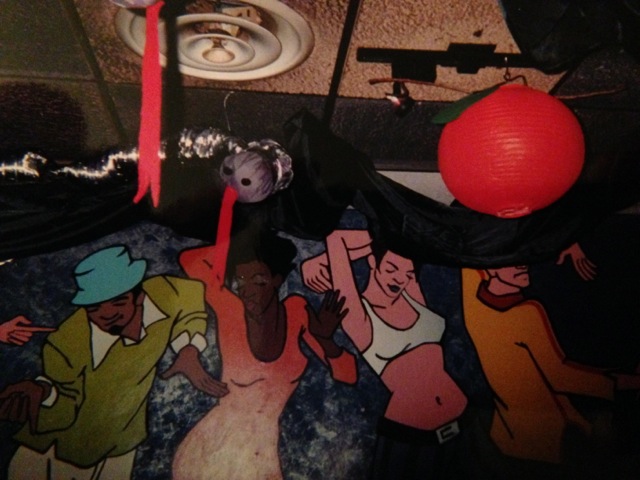
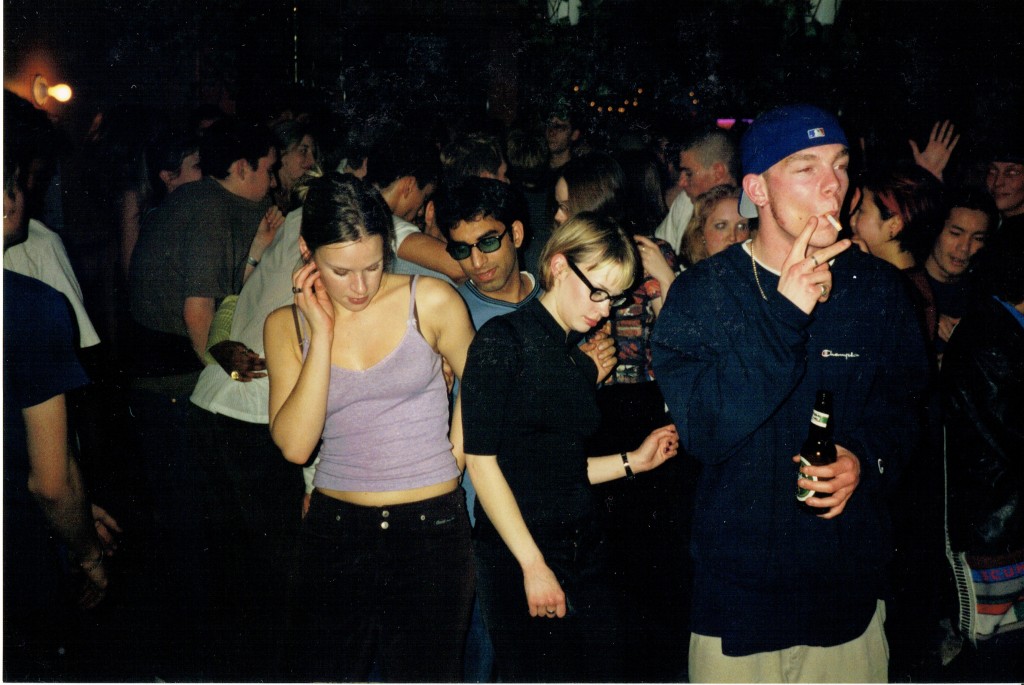
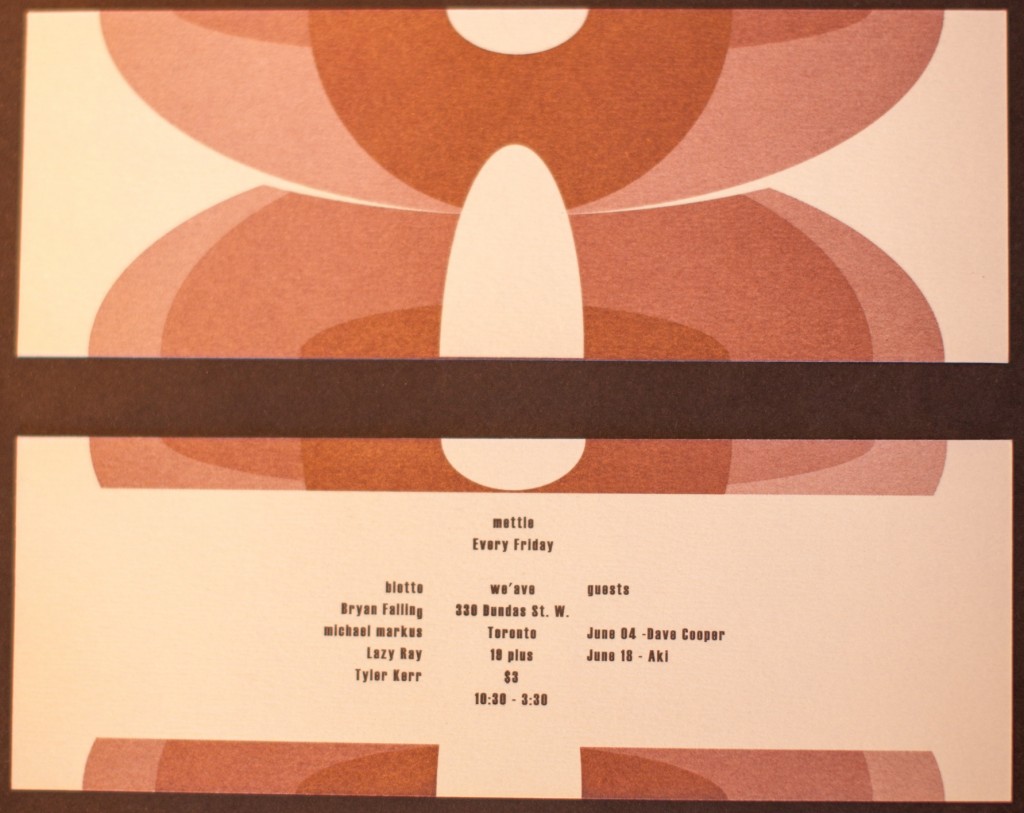
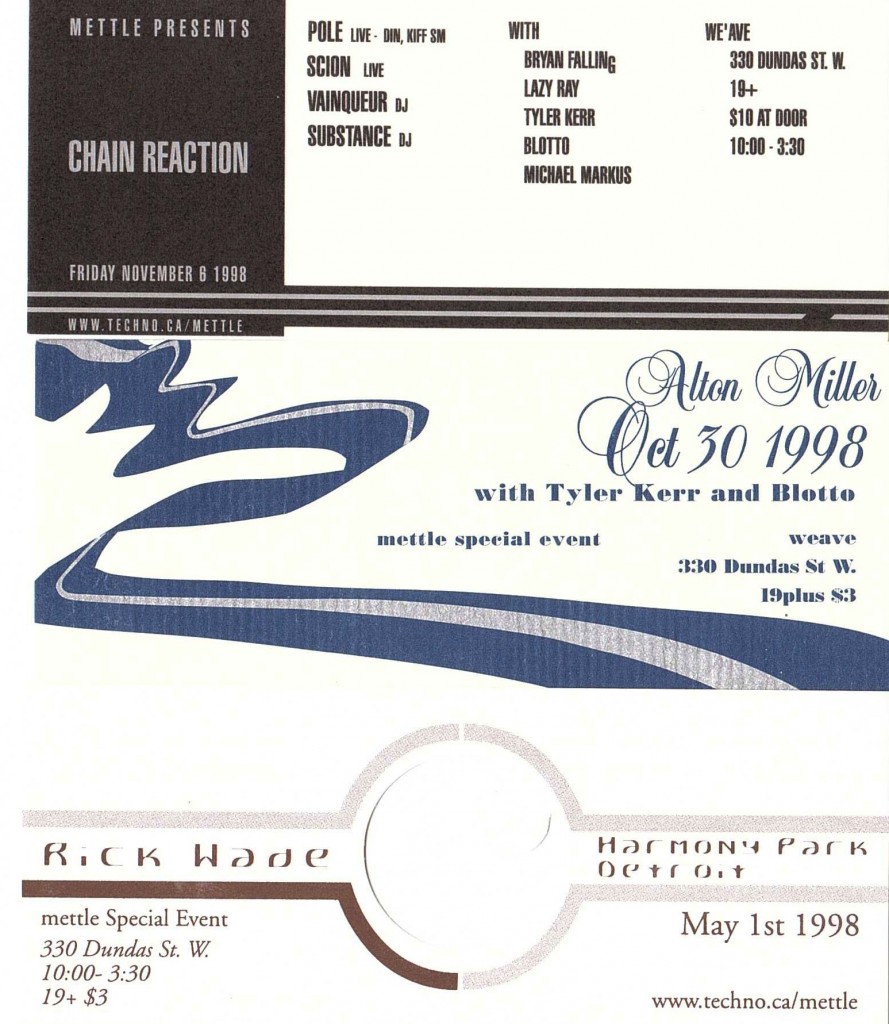
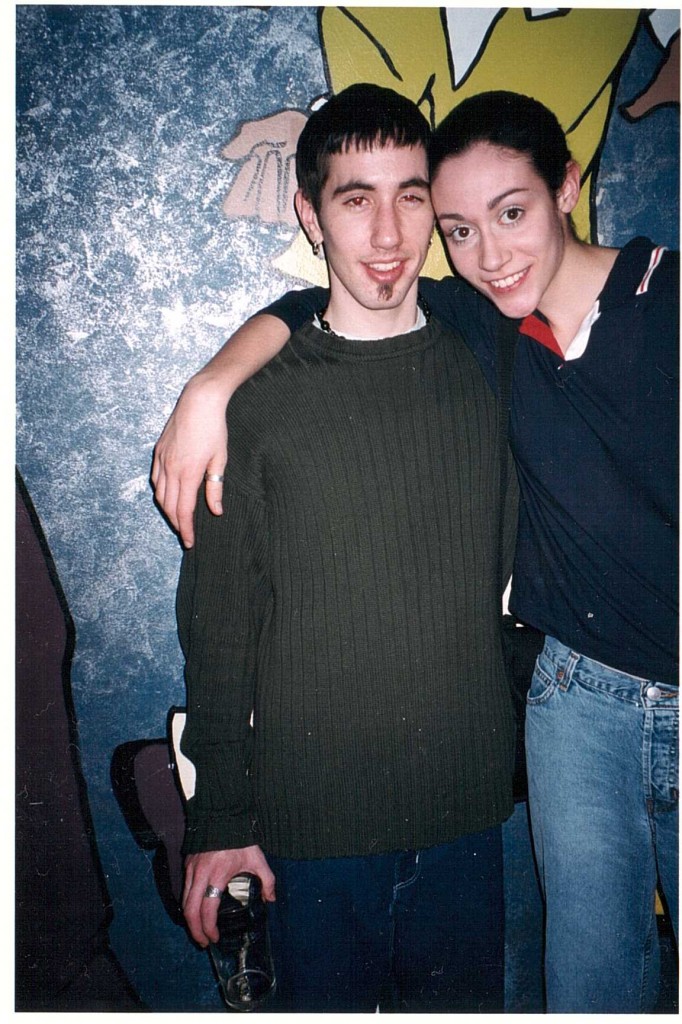
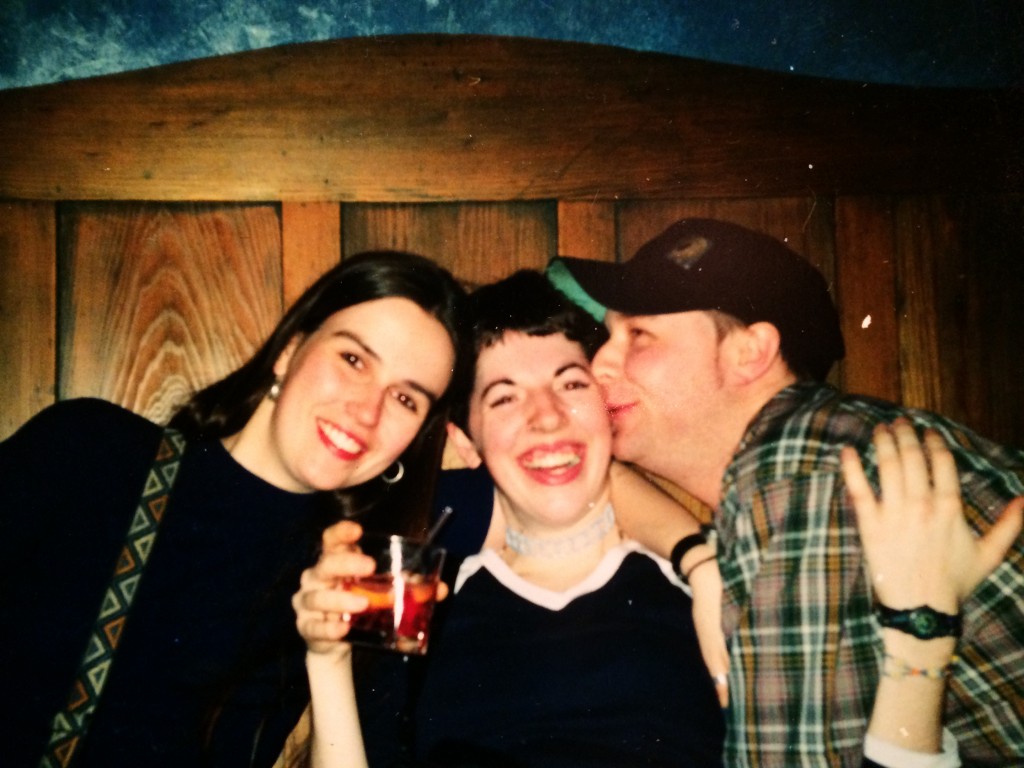
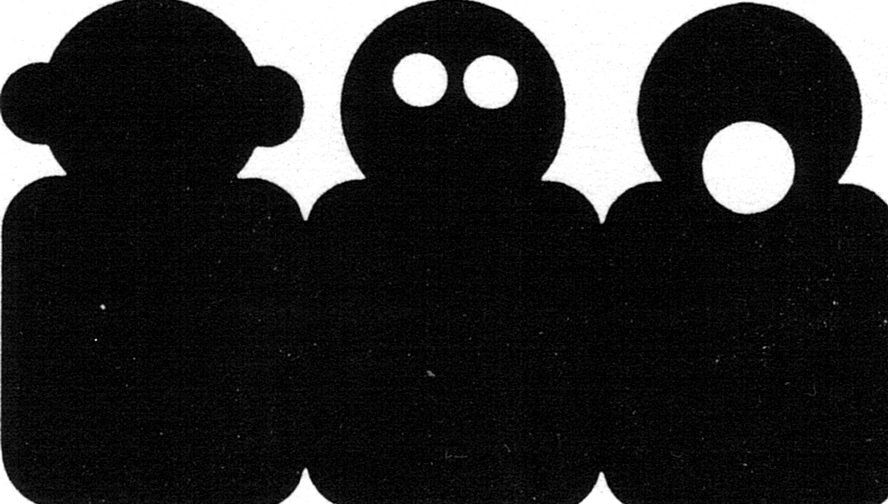
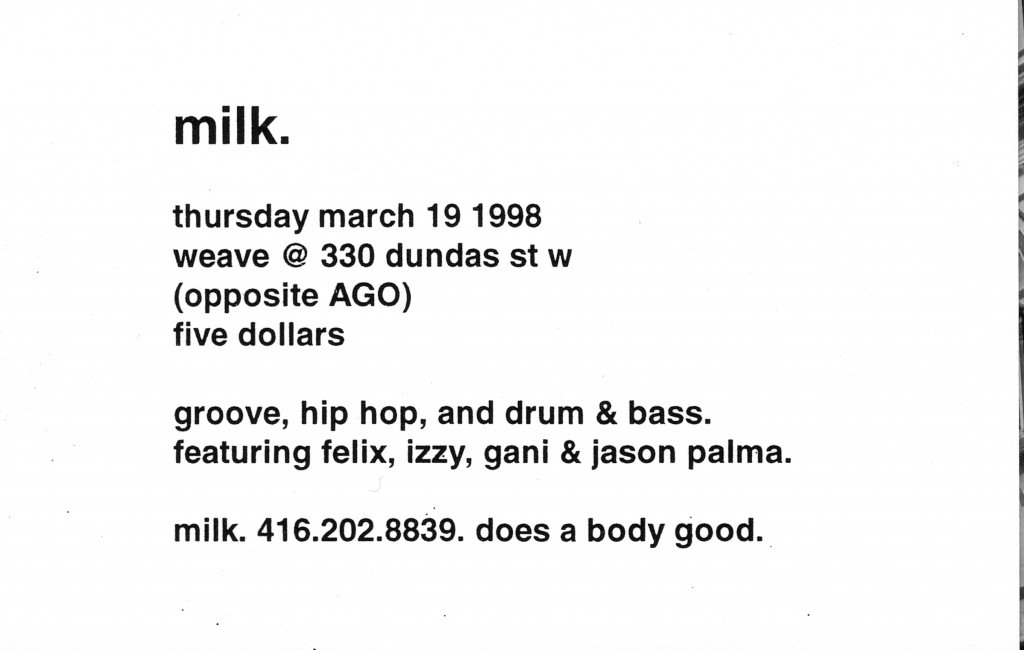
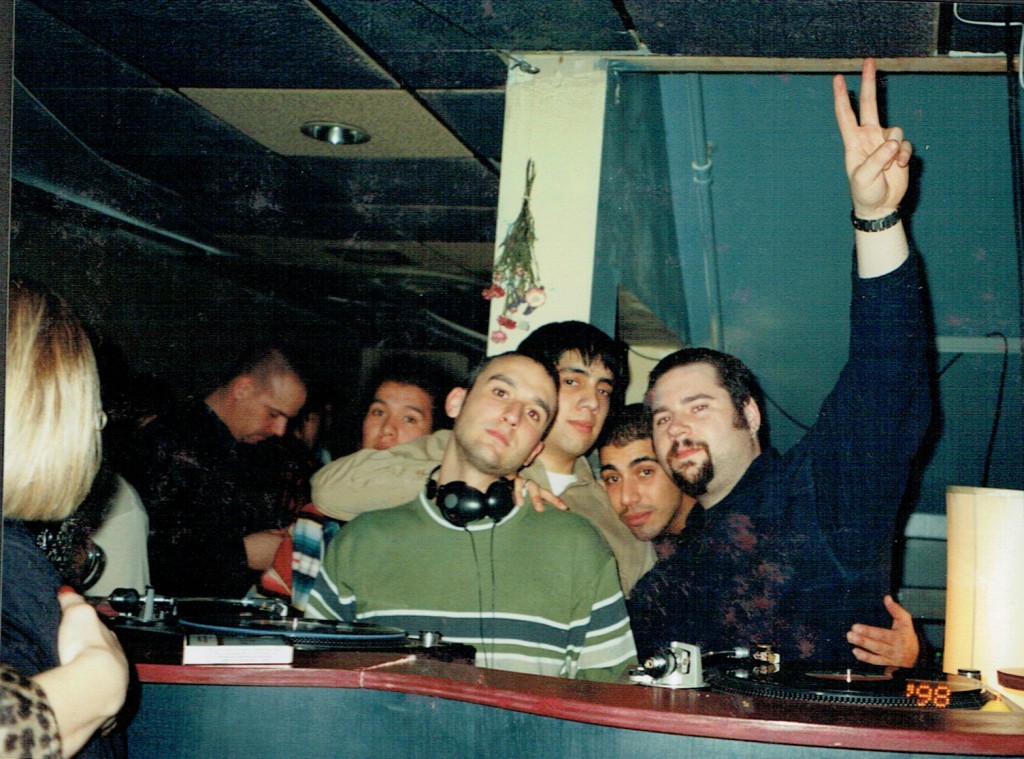
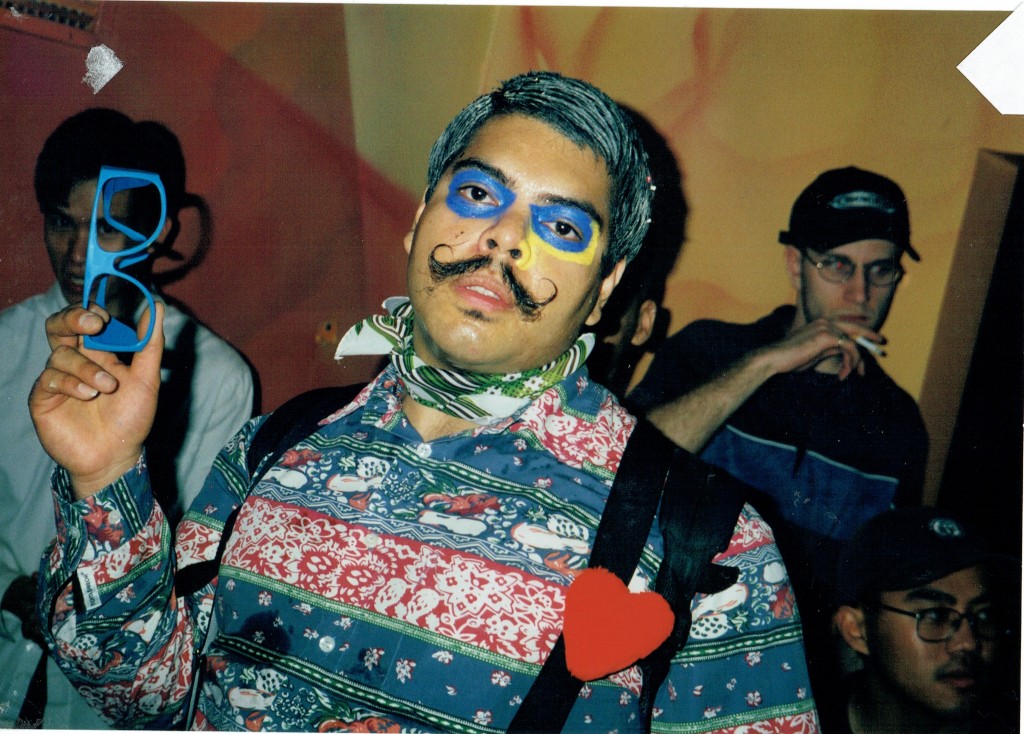
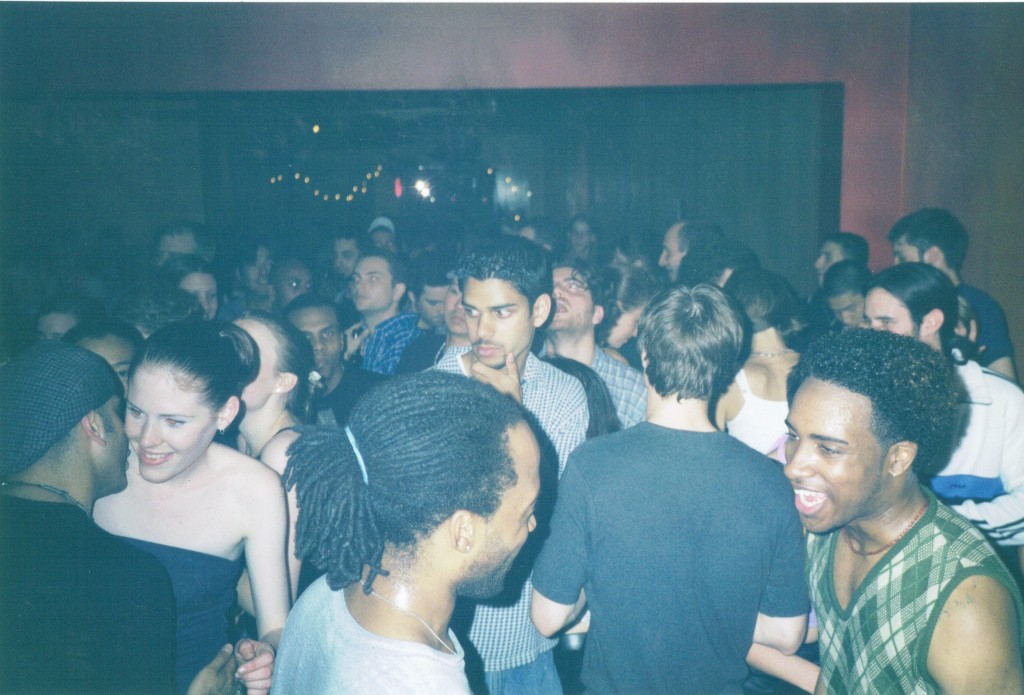
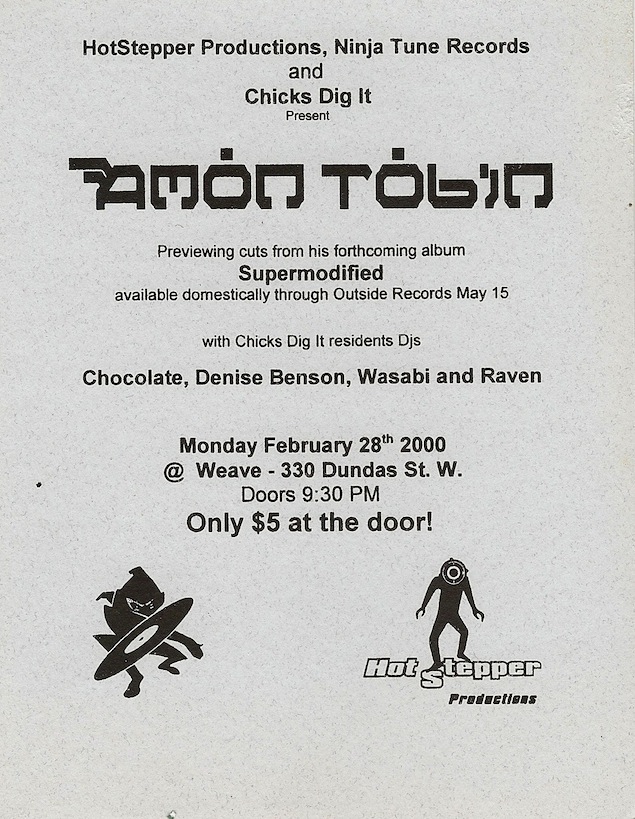
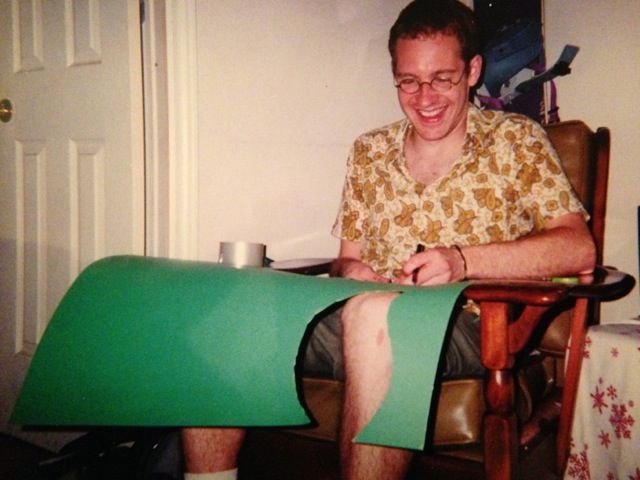
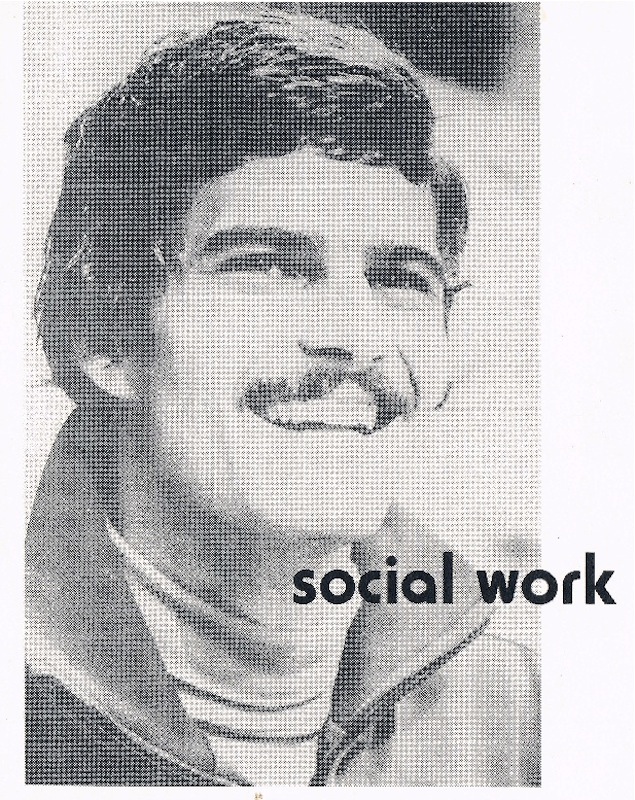
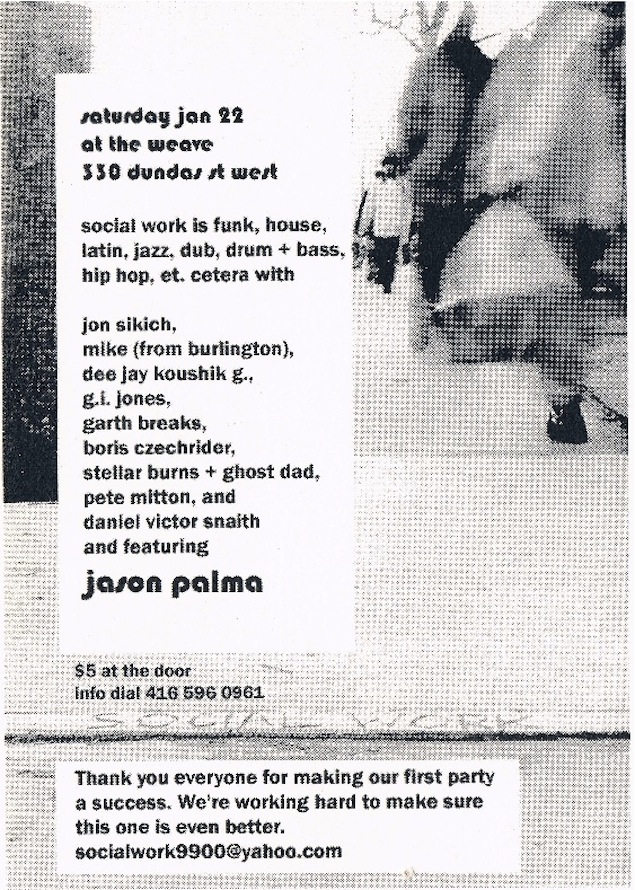
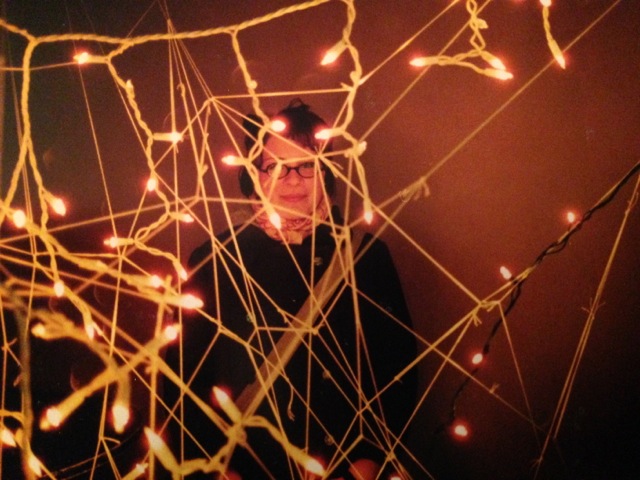
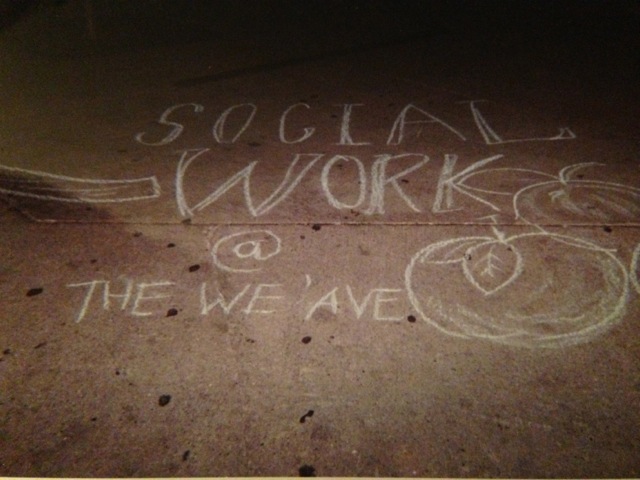
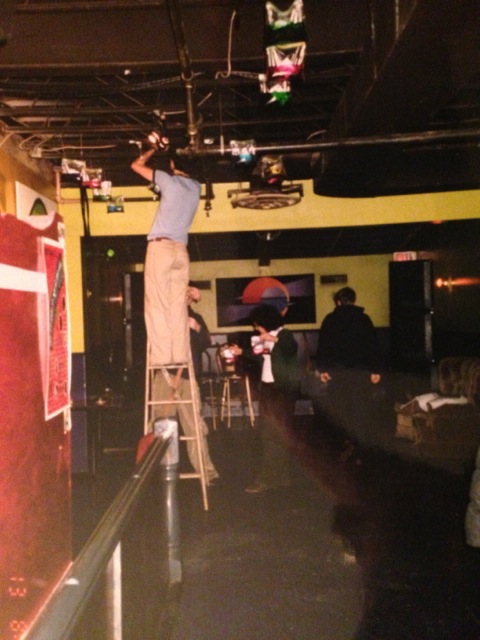
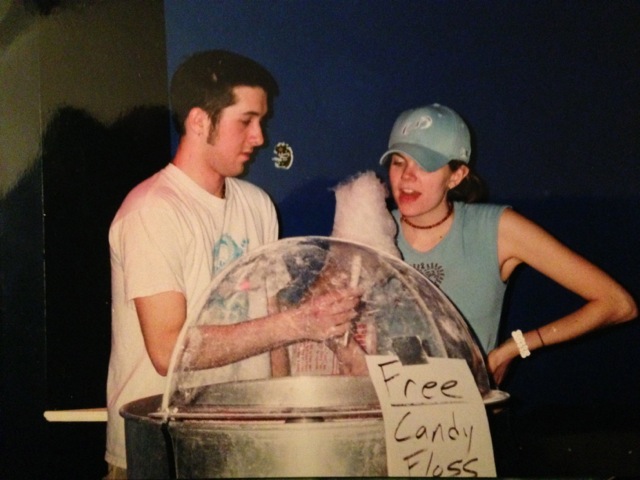
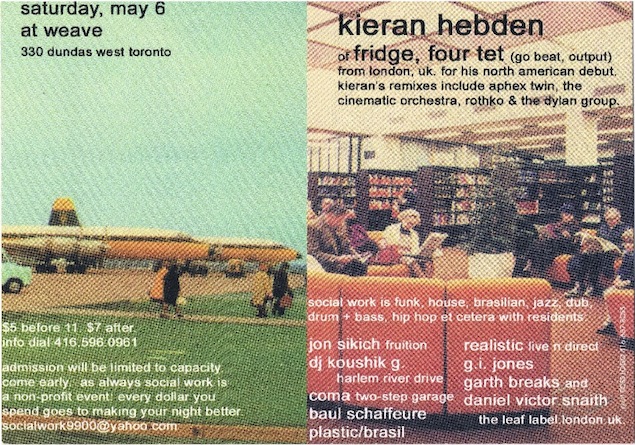
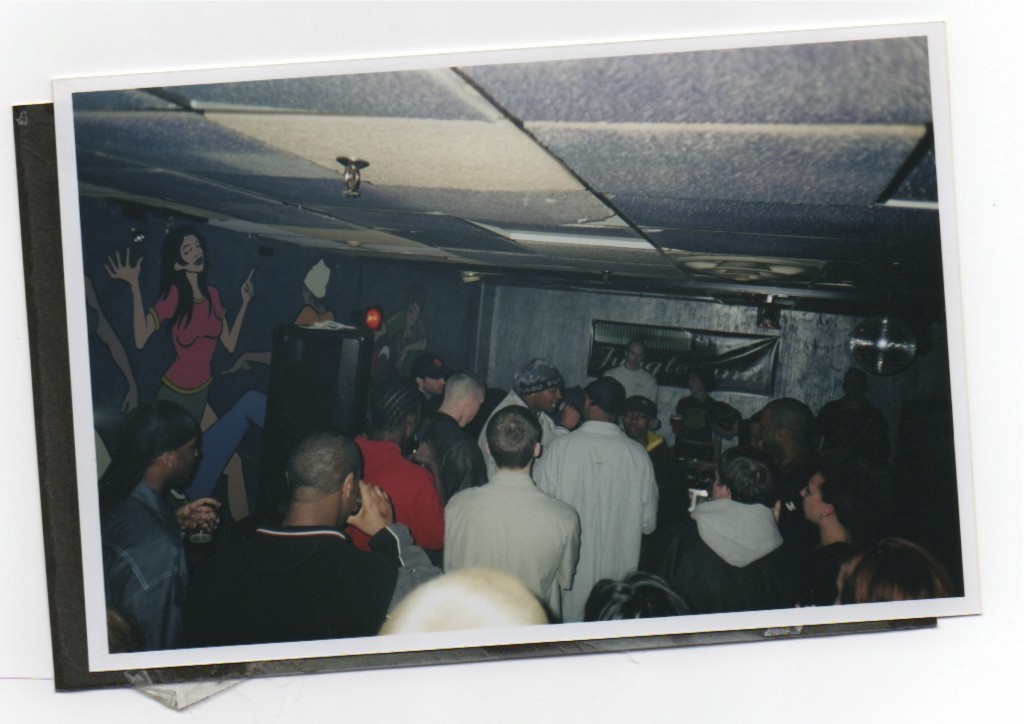


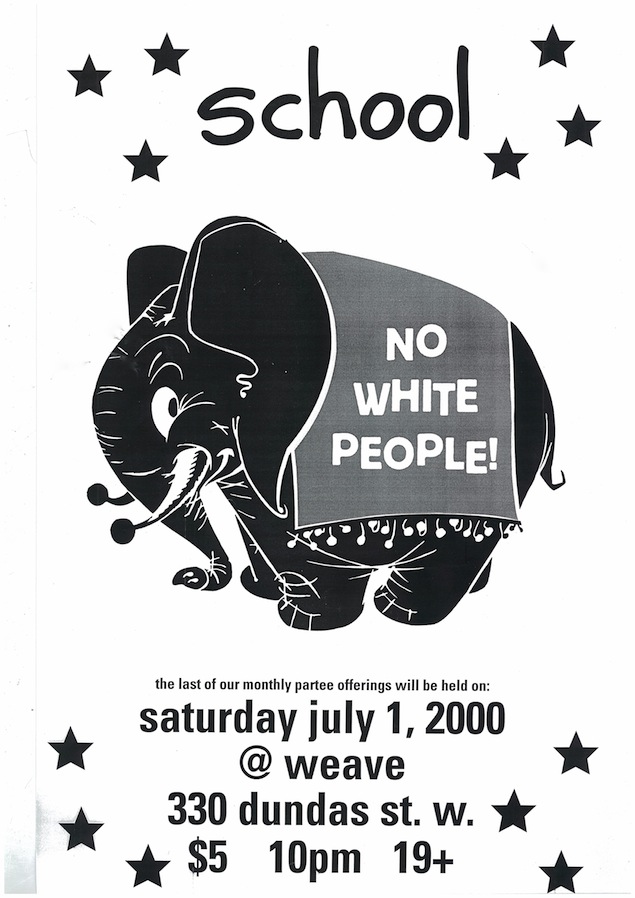
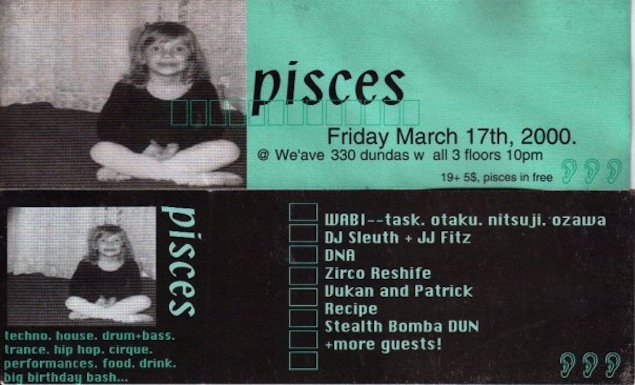
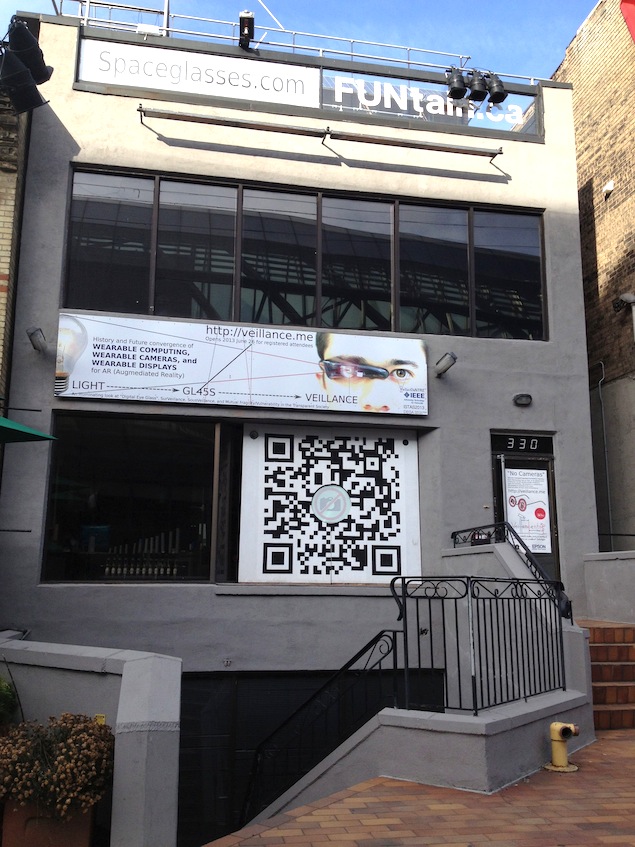
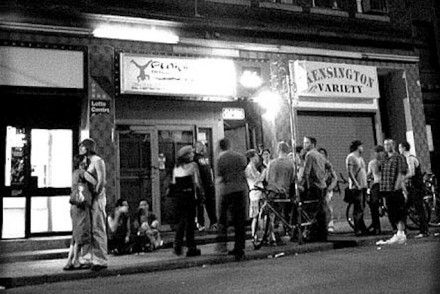
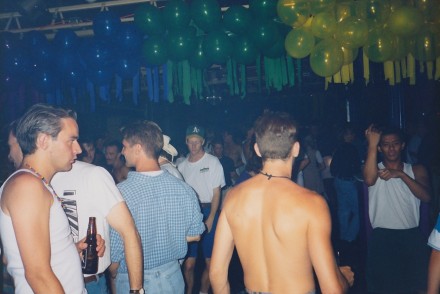
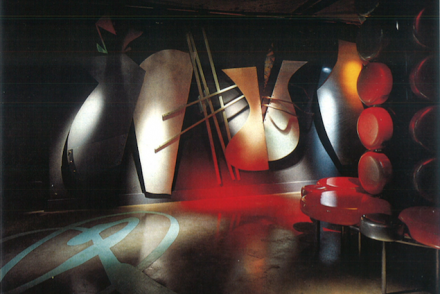

4 Comments
Thank you for sharing some history at 330 Dundas St. W.
Recently I discovered my grandmother lived there as an infant in 1931 and I’m so curious as to what it looked like before it’s massive renovation.
If anyone has any pictures of the exterior prior to the renovation, please let me know. Cheers!
My friends and I would drive from Mississauga every time Galactica Blast would play at the We’ave. What a bunch of talented guys. Watching and listening to drum and bass live was awesome.
Wow, does that ever bring back awesome memories!
To this day, it is still one of my all time favorite Toronto clubs
Such good times…….
All comments in the string below have been republished from their original appearance on The Grid website. We’re including the readers’ comments as they add to these Then & Now stories. We look forward to reading new comments here as well.
Andy
Amazing article! Brings me back <3 9:35 pm on December 20, 2013